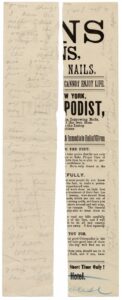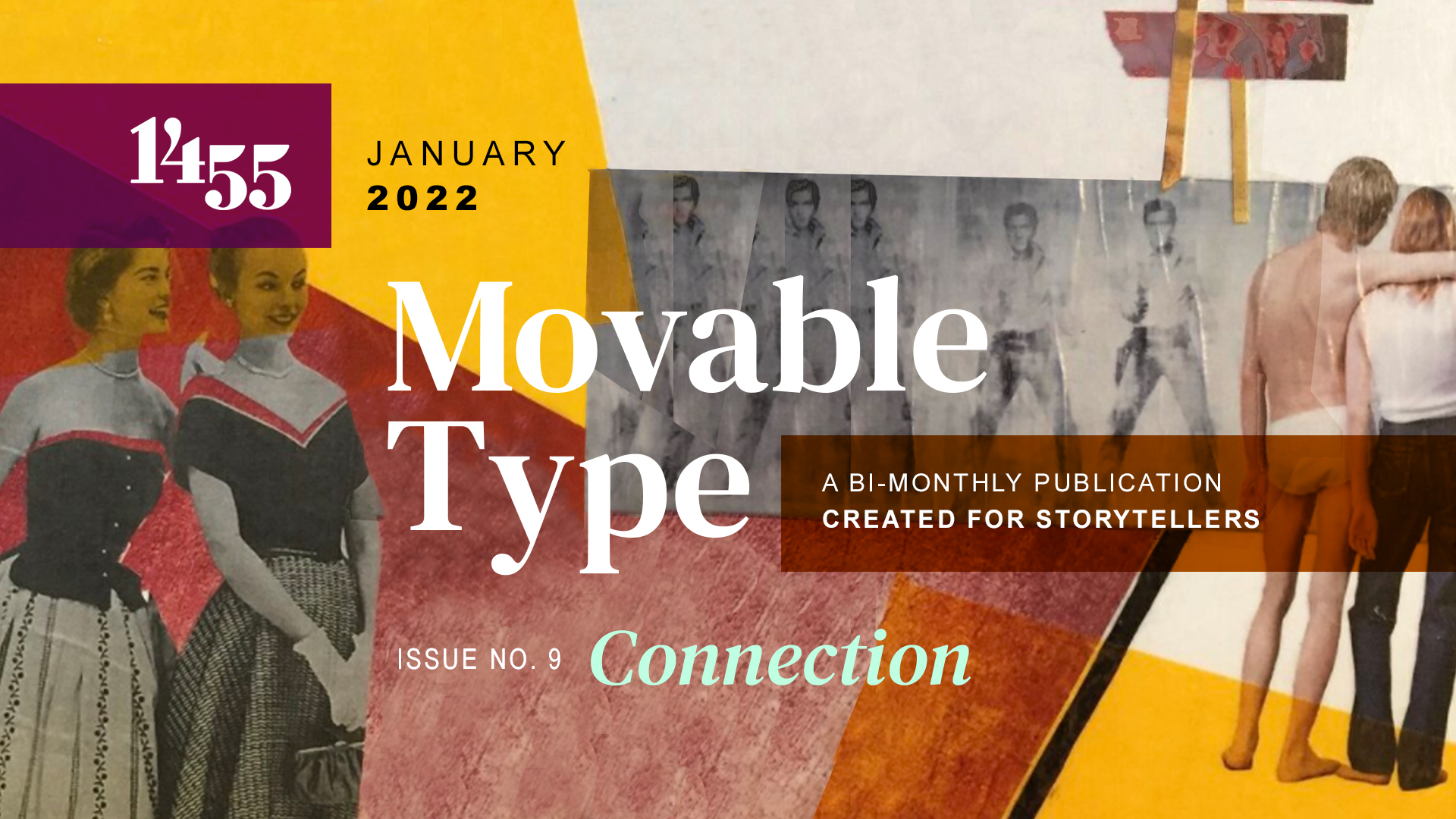Christina Seymour
Tones and Spaces in Emily Dickinson’s “Two things I have lost with Childhood—”

Two things I have lost with Childhood—the rapture of losing my shoe in the Mud and going Home barefoot, wading for Cardinal flowers and the mothers reproof which was more for my sake than her weary own for she frowned with a smile—now Mother and Cardinal flower are parts of a closed world—But is that all I have lost—memory drapes her lips.*
Without adherence to the page’s constraint, without consideration of Dickinson’s usual form, this prose transcription of “Two things I have lost with Childhood—” is a wonderful example of everything a prose poem should contain: intuitively placed pauses, memory’s ripe imagery, lyrical personal observation. The poem uses Dickinson’s cadence—The King James Bible meets confession—to record the sound of thought and imprint the image of memory and longing. Unlike many Dickinson poems that reign in personal material with clipped syntax, devotion to rhyme and meter, and parsed lines, this fragment, scrawled on the back of a chiropodist (podiatrist) flyer, collects meaning rather than distills it.
Indeed, this poem has more personal presence than many of Dickinson’s most known works. Because she has become a caricature in modern culture, Emily Dickinson’s poems tend to be Emily Dickinson Poems, with all their intimidation and importance, to a current audiences. This poem, though, as a fragment less concerned with meter, form, and intellect, is guided by Dickinson’s intimate, passing thoughts, her own internal metronome, her own pace, her own dash, her own intuition. This fragment exemplifies that Dickinson’s poems, in her time, were written for herself, not for an American audience, nor for a scholarly audience, but for her ideal audience.
Such an audience would be a close friend of Dickinson; she would discover this fragment in a large wooded chest, tucked beside several fascicles and recipes dotted with butter and dried icing. She would lift the torn chiropodist flyer that has six bold phrases intact (“Cannot enjoy life,” “Immediate relief given,” “O the Feet,” “You For,” “Short Time Only!” and “Hotel.”) and read a poem truly transcribed as follows:
The things
I have lost
with Child
hood—the
rapture of
losing my
shoe in
the mud
and going
Home bare
foot, [grp]
wading
for Cardinal
flowers and
the mothers
reproof which
was for
more for
my sake
than her
very own
for she
frowned
with a
smile
now Mother
and Card
inal flower
are parts
of a
closed
world—
But is
that all
I have
lost—
memory
drapes
her lips
The shape of this torn paper forces a kind of Williams’ rhythm of thought—each word considered, each line-ending dictated by an edge. Perhaps, without this constraint, Dickinson would not have chosen the consonance and assonance of “drapes / her lips” and “closed world” because, in a longer line, such subtle precision may feel crowded. In this true-to-form version, rhythms are pronounced: the flowers are Card-inal flowers, calling attention to the elemental nature, the brick-like texture of the word.
In this correct transcription, three different tones, or styles, become readily apparent: weary (prompt-like), celebratory (quick recording of imagery), and nostalgic (slow-paced precision). The poem begins with a prompt or an initiating idea that was sparked, perhaps by the language on the flyer or something unrelated: “Two things / I have lost / with Child / hood—.” The pace is slow and weary, with unexpected repetitions like “lost” and “losing,” peculiar phrasing like “The things,” and annotated lines like “lost / with Child / hood” that demonstrate slow self-consciousness, restraint, and “getting started.”
Thankfully, the physical constraint of short lines propels readers quickly forward into a ferocious recording of memory. Image after image, place after place, the memory unfolds, from “The things” to “very own” (the first twenty-one lines), as a celebration of childhood, something the speaker records as a way of not-forgetting the pleasure of it. In Dickinson’s music of memory, diction becomes concise, syntax contains clause after clause, and rhymes and repetitions keep us yearning: “flowers, own, frowned, now,” “wading, Card-inal,” “shoe, losing, reproof, foot, Child-hood.”
The speaker’s intuition, or slowing component, enters first with second-thoughts on word choice and then more apparently with the conceits “for she” (22) and “now” (26). As Dickinson begins correcting herself, editing her words—first “wading” for better rhyme with “Card-inal,” and then “more for,” instead of just “for”—the reader can see a consciousness embodied on the page. The conjunctive “for” signals the recreation of “mothers reproof” as secret approval: “for she / frowned / with a / smile.”
Even more direct than “for she,” “now” signals Dickinson’s clearest attempt to make sense of her childhood memory. The speaker’s tone becomes meditative, nostalgic, and definitional. The excessive use of the dash and the shrinking of the page cause these lines to slow to a state of composition. Dickinson enacts perplexedness, and allows her words (“closed world, lost, drapes, lips”) to shape it, slowly, to culminate in a final line that shifts attention back to the mother in a jolting, expressive, curious image/feeling of a memory draping the lips. One senses a dissonance in the rhyme of “Mother and Card-inal flower” as Dickinson moves closer to the relinquishment of the past as a “closed world” and into the sadness of loss.
I have many poems that wish to remember, to put in stasis a scene of which I don’t want to let go. These poems often take a hinged form: a memory-stanza (image-heavy, longing-heavy) and a “now”-stanza—“Now I put myself to be with only a cup of tea”; “Now you hold a tissue to my nose.” Each of those “now”’s contains desire for the past, a wish to slow down time enough to stop it, to hold the moment permanent at least for this poem. While full of such ache, the “now,” as demonstrated here in Dickinson’s eloquent “Two things I have lost with Childhood—,” allows the writer to progress into a new realization, to make sense of the sting of nostalgia and to feel it, in all its joy and subtlety.
With this power, found in Dickinson’s recording of memory, the writer is allowed to remake the past, to re-own it, and to accept it as uncapturable, with an air of playful revision. Dickinson’s work has taught us that arriving at vulnerability in a poem is a way of being vulnerable. This work can happen on the page, any old page, if written consciously—using one’s own diction and rhythm to transcribe a sense-making, pleasantly constrained by the physical space of the page, the emotional space of tone, and the mental space of the dash.
*Emily Dickinson, “Two things I have lost with childhood,” in Emily Dickinson Collection, Amherst College Digital Collections, accessed September 25, 2015.

Christina Seymour is the author of When is a Burning Tree (Glass Lyre Press 2018) and the chapbook Flowers Around Your Soft Throat (Structo 2016). Her poems also appear in The Moth, North American Review, Cimarron Review, The Briar Cliff Review, Wick Poetry Center’s exhibit, Speak Peace—American Voices Respond to Vietnamese Children’s Paintings, and elsewhere. Her work received the Russell MacDonald Creative Writing Award and has been nominated for the Pushcart Prize, Best New Poets, and the AWP Intro Award.
christinaseymour.net


